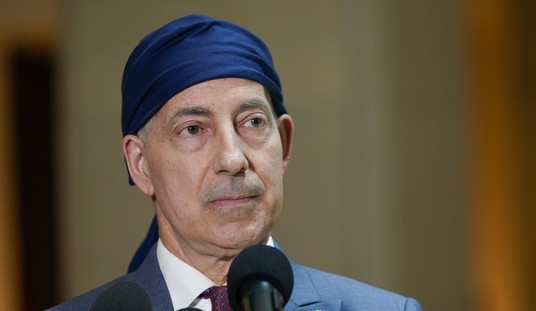The pope who had as much to do with defeating Communism as President Reagan and Prime Minister Thatcher will be canonized by the Catholic Church on Sunday as millions of the faithful look on. John Paul II’s towering moral authority and the spiritual hold he had on the peoples of Eastern Europe were decisive factors in weakening Moscow’s grip behind the Iron Curtain.
Two million people are expected to descend on Rome for the ceremony — 1,700 buses, 60 flights and a half-dozen special trains for pilgrims from John Paul’s native Poland alone. The outpouring of love and affection will match what ordinary people felt about this man while he was alive. He became the most-traveled and most-watched pope in history. And people responded to his gentle good humor, sharp, penetrating intellect, and common sense by taking him into their hearts.
Anticipating his death, I wrote this back in 2005:
Abraham Lincoln, when asked what were his plans to win the war, was quoted as saying “I claim not to have controlled events, but confess plainly that events have controlled me.”
I thought of this quote when pondering what to write about the imminent death of Pope John Paul II. Was Lincoln correct? Are we condemned to simply ride the whirlwind of history, thrown here and there by capricious forces beyond our control? Or do men command this whirlwind through the force of their own personality and wisdom of their decisions?
For me personally, these are the questions that make reading history worthwhile. So when we reflect on the extraordinary life of Karol Wojtyla, a good and holy man, it is impossible to separate him from the times he lived in.
Oh, and what times they were! To have this man, this Pope elected to the Papacy at a time when two of the 20th Century’s most determined foes of tyranny and passionate advocates for liberty – Ronald Reagan and Margaret Thatcher – also came to power in their respective countries would have seemed to the Greeks as nothing less than proof that fate ruled the affairs of men.
John Paul’s alliance with the Anglo-Americans was never set down on paper and coordination was superficial at best. But where Reagan and Thatcher’s hard-headed actions to defeat Soviet Communism stopped, the Pope’s moral authority took root and turned the tide toward people power by giving legitimacy to the aspirations for freedom so longed for by so many in that captive part of the world.
In short, Pope John Paul II gave a final answer to Josef Stalin’s contemptuous question when conflict with the Catholic Church in Russia seemed unavoidable. “How many divisions does the Pope have?” Stalin asked. This Pope could have told him he not only had the heavenly host of angels on his side but the millions of hearts and minds of people that yearned to breathe free, ready to march at his command.
Also being canonized along with John Paul is John XXIII, perhaps the most consequential pope of the last few centuries. His call for a church-wide conclave — the Second Vatican Council — ended up revolutionizing the liturgy by allowing the mass to be said in the vernacular. There was also an historic push for ecumenicism as Rome reached out to heal the wounds of the schism with the Orthodox church and initiated dialogue with Protestant sects.
The reforms initiated by Vatican II brought the church into the modern world. Many did not think the council went far enough, especially relating to the role of women in the church and the participation of lay people in church affairs. But considering where the church was in 1959 when John XXIII became pope, it was considered a radical departure from the past.
Michael Anthony Novak, assistant professor of theology at Saint Leo University in Saint Leo, Fla., says that the two popes are arguably the most notable leaders of the church in the 20th century. In the case of John, he pointed out that there was great promise in modern thought and encouraged bishops to speak their minds about it and thus loosened the centralizing tendencies of the Vatican’s bureaucracy.
“This sparked a wave of re-energized engagement by the church with the rest of the world, which has continued to this day,” Novak said.
There are those who say the church is ill-served by making popes into saints — a relatively new phenomenon — given that saints are church figures held up as examples of the way Christians should try to live their lives.
“Saints are supposed to be models of sanctity for Christians to imitate, but who can a pope be a model for except for another pope?” asked the Rev. Thomas Reese of the National Catholic Reporter.
But the faithful see the event as a landmark moment for the church.
“It will be a wonderful moment to focus on what brings Christians together,” said Angela Conti, 71, a church volunteer in Rome. “With The Good Pope (John XXIII’s nickname), John Paul and Francis all in the spotlight, it will bring many people to tears.”
Carmelo Orlando, 55, a limousine driver, agreed: “I am not the only one who expects to remember this day for the rest of his life.”
In addition to as many as 50 heads of state or government and official national delegations from more than 100 countries, there will be as many as 150 cardinals, 1,000 bishops and delegations from several dozen non-Catholic faiths attending the ceremony.
The event will be streamed live over the internet as well as being broadcast live by EWTN.
Coverage will begin at 3:30 AM Eastern on Sunday.









Join the conversation as a VIP Member